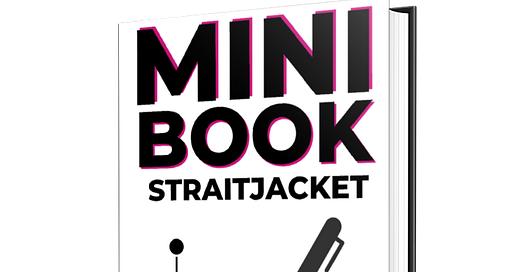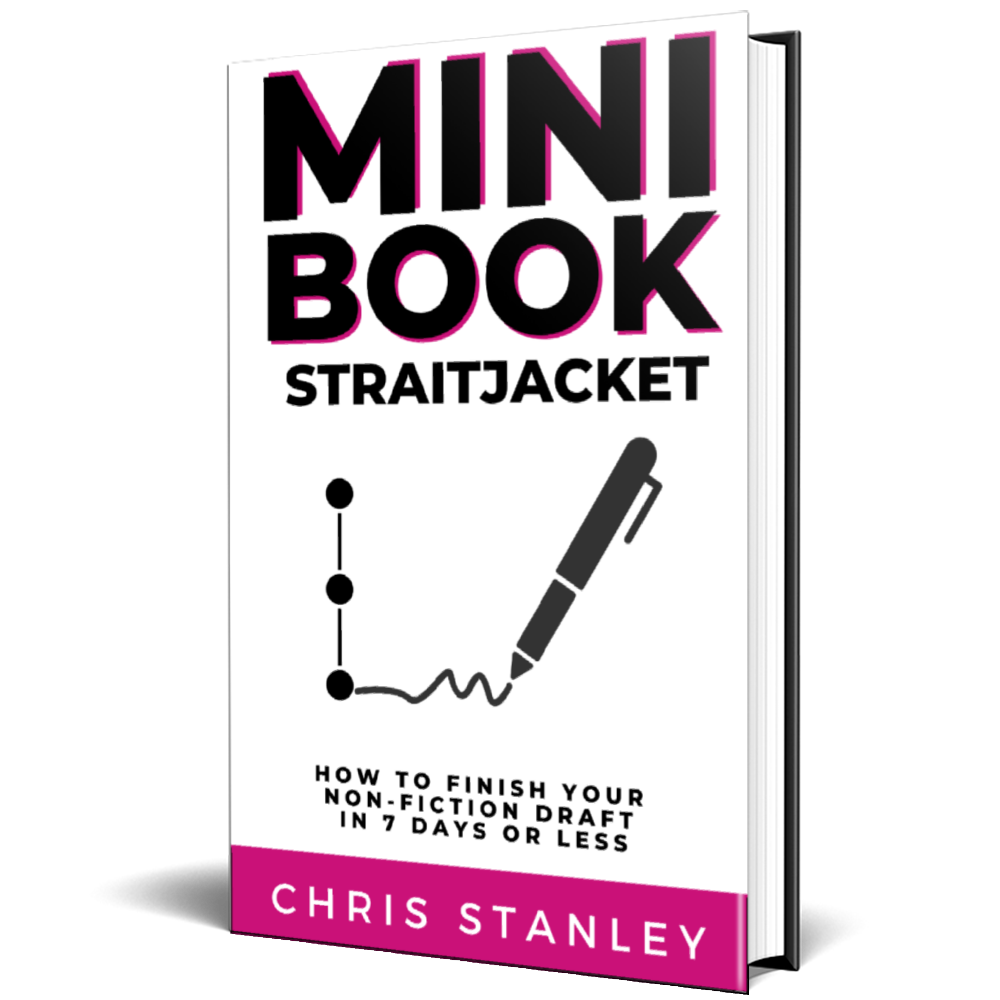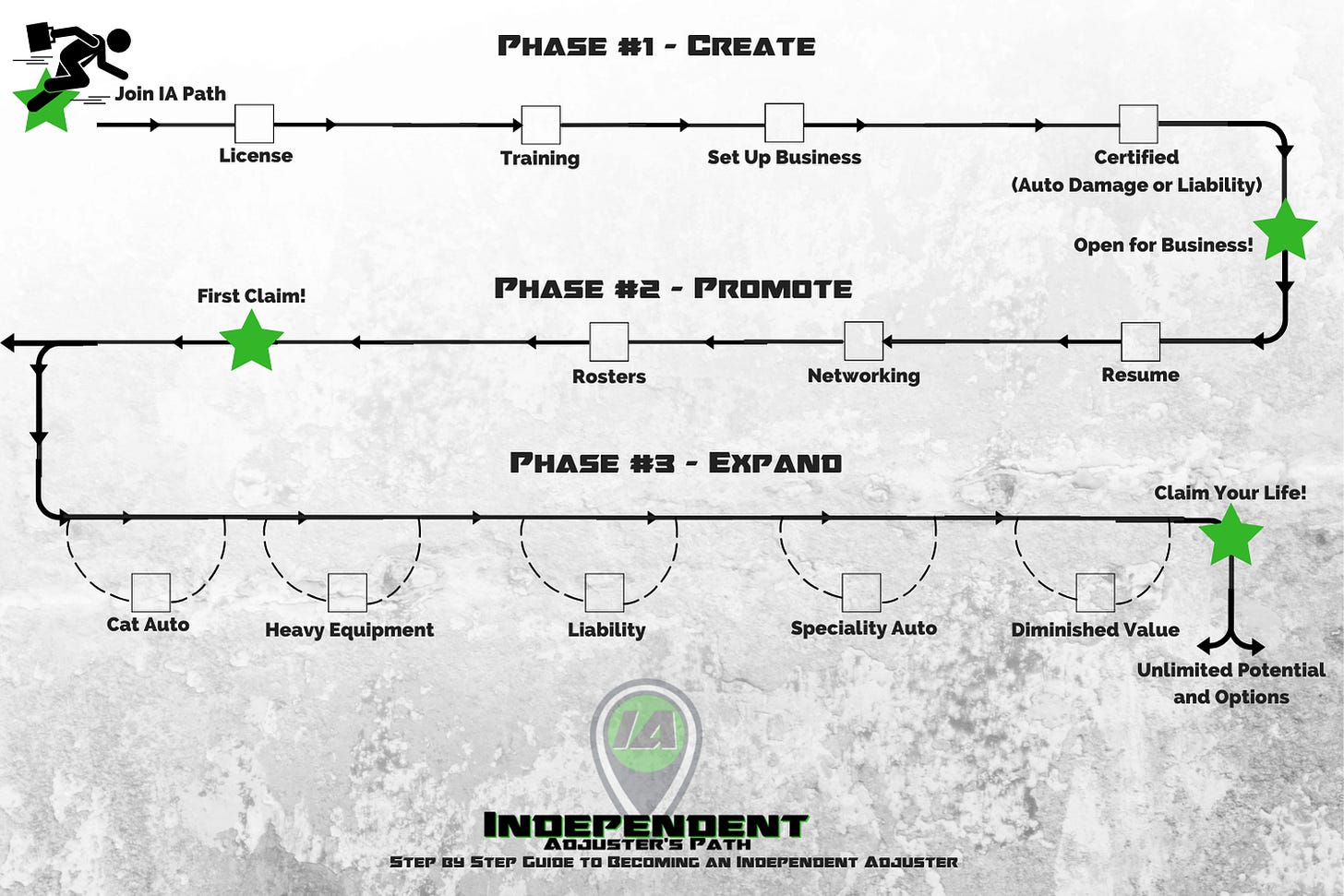Step 2: Choose Your Book Outline & Chapter Titles
Lesson 3 of the Mini Book Straitjacket Course
(This is a Chapter of my upcoming book Mini Book Straitjacket: How to Finish Your Non-Fiction Draft in 7 Days or Less and a lesson in the Mini Book Straitjacket Course)
Step 2: Choose Your Book Outline
Your outline of the mini book puts restrictions on you.
It forces you to fit your topic and book into a tight structure. Embracing restrictions is what makes the Mini Book Straitjacket work. It allows you to quit thinking about all the possibilities and focus in on just the next point, sub-point, and eventually sentence.
Often we avoid simple outlines because it doesn't feel "smart," but clear outlines are the easiest and simplest way to start and easier for the reader to follow along.
Here are the three outlines I restrict myself to using.
W's
Sequential
10 Problems
Let's look at each outline individually and see when one is better than the other.
W's Outline
The W's Outline (technically the 5W1H Method… but that is a mouthful) forces you to ask the key questions about a topic.
What
Who
Why
When
Where
How
Asking these questions about your topic will force you to explain your topic from all the most commonly asked questions.
Best Used for Concepts
When you want to introduce a new concept to readers, the W's method is king.
In the Mini Book Model, I used the W's method to introduce the concept of mini books. By using the W's method, I was able to thoroughly explain and give a broad overview and introduction to the topic. This outline lays the foundation for something that people are not familiar with.
This may be the simplest of all the outlines, but don't let its simplicity make you think it's not useful.
Here are some concept legacy non-fiction books,
"Thinking, Fast and Slow" by Daniel Kahneman
"The Power of Habit" by Charles Duhigg
"Grit: The Power of Passion and Perseverance" by Angela Duckworth
To write a book on a concept, use the W's model and apply the Mini Book Straitjacket.
Keep It Obvious
When using the W's outline, keep your questions simple and obvious.
Don't try and dive deep into "What questions should I ask?" You aren't trying to outsmart the reader. You are trying to meet the reader exactly where they are. They have questions and you want to show you have answers.
Here is an example of a simple, obvious outline from my book Mini Book Model.
What I Mean When I Say Mini Book
Who Writes and Who Reads Mini Books
Why You Should Write a Mini Book
How You Write a Mini Book
When to Stop Writing a Mini Book
Where to Publish and Promote Your Mini Book
These questions made it super easy for me to sit down and answer the obvious questions and readers loved it.
Renaming Your Chapter Titles
Maybe you don't want to be seen as a simpleton.
You may feel self-conscious about writing chapter titles with all W's (and 1 H). You can rename your chapter title to "hide" the fact that you are using a W's model. I recommend you only rename after your writing is complete.
If you start off trying to get fancy and clever, you may never start writing.
Here is an example of my Mini Book Model chapters redone to hide the W's outline.
Understanding the Concept of a Mini Book
The Audience: Writers and Readers of Mini Books
The Benefits of Writing a Mini Book
Steps to Crafting a Mini Book
Knowing When Your Mini Book is Complete
Effective Platforms for Publishing and Promoting Your Mini Book
To use this outline, just write down the W's and fill in the blank for your topic.
(I have a premade W's Manuscript Template you can use to kickstart your manuscript. Head to minibookstraitjacket.com to download the template.)
Sequential Outline
The sequential outline walks someone through how to do something, start to finish.
This type of outline works best with processes. Want to teach someone how to build their first raised bed garden? How to build a marketing funnel in ClickFunnels?
Perfect, use the sequential outline.
Roadmaps
Most businesses have a journey they want their customers to go on.
What better way to explain the steps that your ideal customer should take to solve their problems than with a roadmap laid out in a mini book? My best-selling book in my insurance adjuster series, Independent Adjuster's Playbook, gave readers a 7-step roadmap to follow. It showed them what to do at each step if they wanted to become an independent adjuster.
This book sold my high-end coaching services for years and still helps me land new clients.
Here is the roadmap that book was written off of.
With a roadmap book, you guide your potential clients on how to achieve the results they want on their own.
Then you have the chance to tastefully tell them if they need help with any step of the journey that you have a solution to that. It is a great type of outline to build a funnel of prospects coming your way. If you have a roadmap for your customers, those steps serve as the chapter titles for your book.
P.S. This book you are reading… is a Sequential Outline.
Framework
If you have a signature framework, a sequential book is also a perfect outline.
When I wrote the Simple Online Business Model, I used my acronym "SIMPLE" to guide the outline. By narrowing down to just the essential elements, you avoid the overwhelm of endless possibilities and can maintain a clear focus. This structure not only simplifies your writing process but also makes the reader's experience smooth by making the content easier to follow.
If you have a way to do something but you want it to be a framework, here is how I turn any process into a framework.
F - Formulate a process
R - Refine into simple steps
A - Account for the number of steps
M - Make an Acronym
E - Explain with a Visual
Then if your FRAME actually "works," you have a framework you can build your book around.
Business Flywheel
I found that a sequential outline works really well for laying a foundation for the future.
Not only do you provide your readers and potential customers with a clear process to follow, but you also establish your credibility as an authority on the topic while presenting the easy onboarding ramp for coaching, courses, or even other books on that you can mention in your book. I ended up writing a book for nearly every step of my insurance adjuster roadmap book and a corresponding course.
By looking at your roadmap, you can see where people are getting stuck and create content, posts, books, courses, or coaching programs for those specific steps.
This clarity is not only good for your reader but a breakthrough for you.
You clear the confusion in your mind and identify a path to guide your customer through each step of their journey. You no longer have to guess what the hurdles are for your customers. You can stop guessing what hurdles your customers face. Look at your roadmap, see where people are getting stuck, and create content, posts, books, courses, or coaching programs for those steps.
This creates a flywheel in your business with your roadmap book acting as the flagship to promote them all.
(I have a premade Sequential Manuscript Template you can use to kickstart your manuscript. Head to minibookstraitjacket.com to download the template.)
10 Problems Outline
The 10 Problems outline focuses on your readers' biggest obstacles.
You determine what is holding them back from getting the result they desire and help smash those obstacles. If you've been in your industry for a decent amount of time, you can likely identify the biggest things holding people back from having success. 10 Problems Outlines work great if you are writing about a mindset shift or wanting to zero in on challenges they are facing.
All you do is list the problems out and that is your chapter outline.
Pain Points
The 10 Problems Outline centers around the pain points of your customer, which is usually a really good idea.
It zeroes in on what is ailing the customer and offers a solution, making your book an easy buy for a reader. If they suffer from one of the problems, they'll buy your book. I used the 10 Problems Outline in my mini book Misleading Money Mantra: How Chasing Money Is Holding You Back From the Life and Business of Your Dreams. I listed the 10 big misconceptions and lies society was pushing on people and offered a solution to being a slave to money.
You can write a book about the pain points of sprinklers, writing a book, or any topic you choose.
Most Popular
The biggest problem you'll run into is which problems to tackle.
You'll likely have a long list. If you are having trouble coming up with a list of problems, go online to groups that discuss your topic. I'm sure you'll find people complaining about your industry and what's wrong with it.
Write down every problem you see and can think of.
If you have more than 10, congratulations. You can trim it down by focusing on the most popular. If you aren't sure which problems are the most popular, you can use a Google Analytics Keyword analyzer to see how many times people search for solving that problem in Google.
That'll give you a great idea of which problems are affecting the most people.
Making It Feel Good
Here is the problem with the 10 Problems Outline.
Your reader doesn't want to read a bunch of problems. Your reader wants to have solutions to their problems. Once you have a list of problems, you'll want to reword them into solutions.
When the reader encounters your book, they'll see an ocean of peace because you offer so many solutions to their biggest problems.
This transformation from problems to solutions will make your book more appealing and provide a sense of hope and progress to your readers. It also positions you as the doctor to their ailments. This does great at establishing a deeper relationship with the reader.
They'll want to visit you the next time they have an ailment of any kind around your topic. It'll work on turning them from a reader to a customer.
(I have a premade 10 Problems Manuscript Template you can use to kickstart your manuscript. Head to minibookstraitjacket.com to download the template.)
Action Step: Create Your Mini Book Outline
Decide whether the W's Outline, Sequential Outline, or 10 Problems Outline best fits your topic and goals.
Remember to focus on what will make your content most accessible and valuable to your readers.
Consider: are you writing about a Concept (W's), a Process (Sequential), or Mindset/Challenges (10 Problems)
Draft Your Outline: Spend the next 30 minutes drafting an outline for your mini book using the chosen structure. Keep it simple and straightforward, focusing on the chapter titles only at this point.
Share Your Outline: Post your outline in the comments of this post or the Mini Book Masters Community for feedback and support.
By taking this action step, you'll be well on your way to creating a focused and effective mini book that resonates with your readers. Embrace the structure, and let it guide you to success!
PREMIUM CONTENT FOUND BELOW INCLUDING CHAT GPT PROMPT TO HELP YOU OUTLINE!
Keep reading with a 7-day free trial
Subscribe to Mini Book Publishing Accelerator to keep reading this post and get 7 days of free access to the full post archives.







